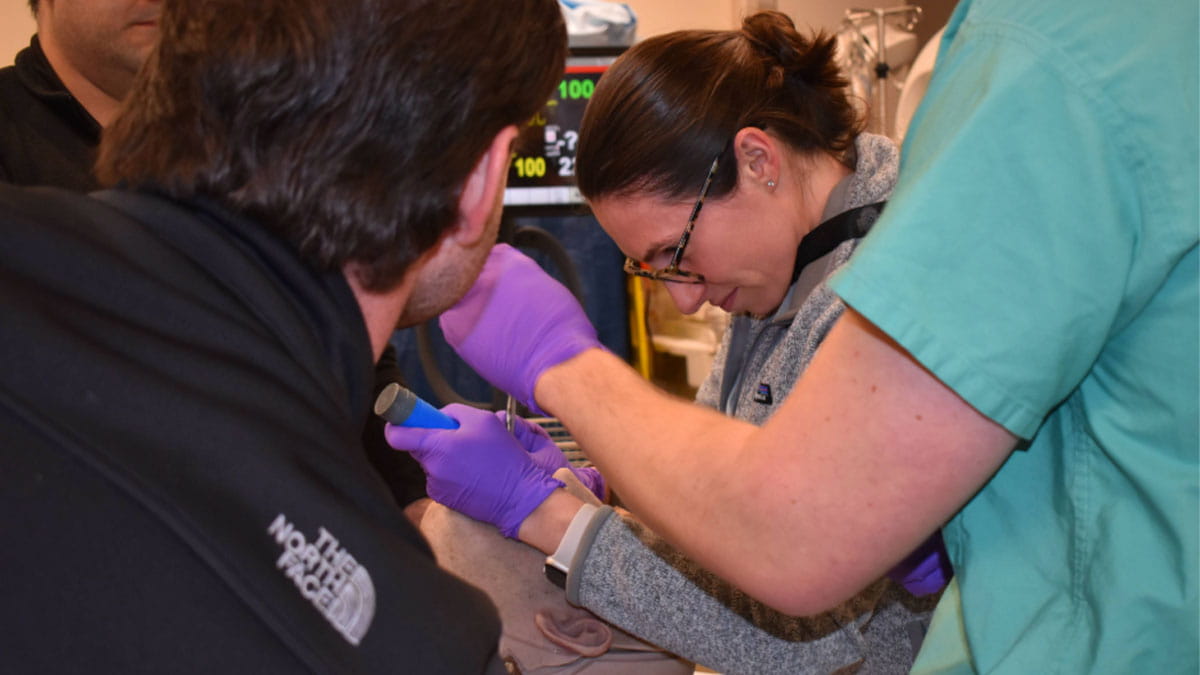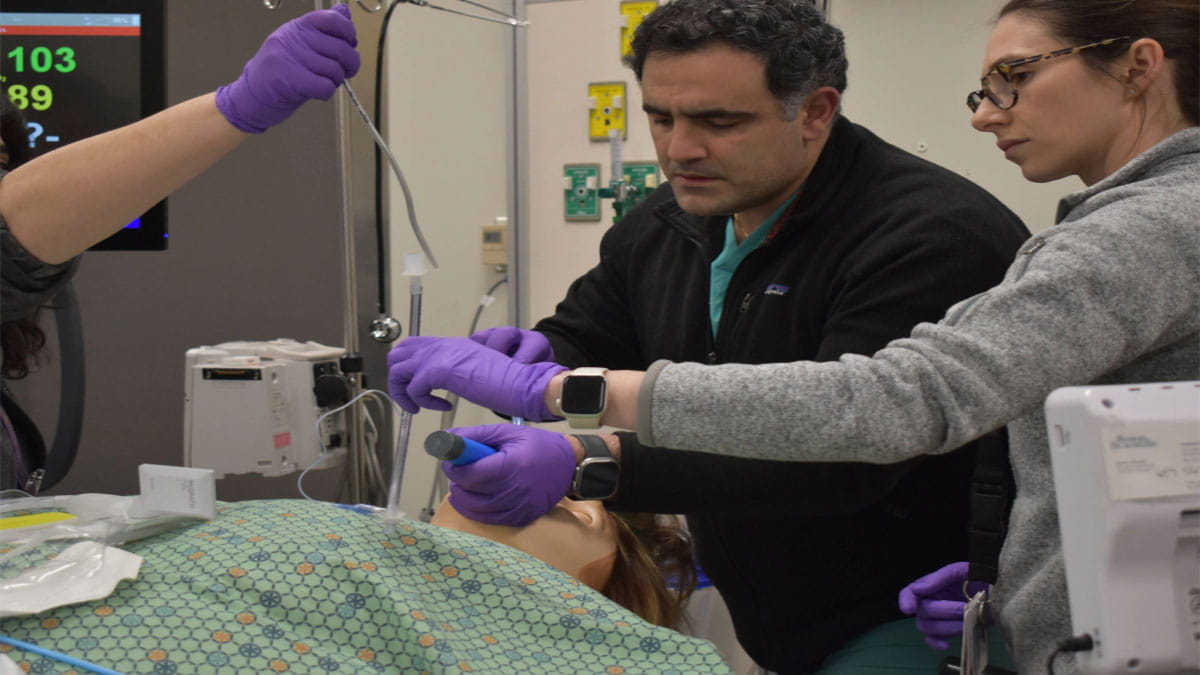Team science guides residents during hands-on difficult airway training

Image caption: Residents train non-surgical airway procedures on manikins as a team.
For patients and physicians, pathologies leading to difficult transoral intubation are complex and high-stake situations. Within the medical center, the Difficult Airway Response Team (DART) is activated in these potential complicated airway situations which results in providers from several specialties quickly responding to help secure the patient’s airway. Daniel Hall, MD, chief resident in the Department of Otolaryngology — Head and Neck Surgery at The Ohio State University College of Medicine, envisioned and led a multidisciplinary collaboration to create a novel training for medical residents and fellows to practice the DART pit crew model and advanced non-surgical and surgical airway procedures on hyper-realistic manikins.
“As a team, we need to be more systematic and organized so we can quickly move through emergency airway roles and responsibilities,” Dr. Hall says. “The goal is to enable physicians to quickly identify and fulfill a role during DART activations, which will allow for expeditious and well-thought-out care.”
Residents from six different medical departments at The Ohio State University Wexner Medical Center participated in the DART training in early January at the Clinical Skills Education and Assessment Center (CSEAC). The goal of the training was to provide the trainees with the opportunity to practice the DART pit crew model in realistic simulations, using novel 3D printed task trainers and simulators that mimicked difficult airways pathology and anatomy.
Each scenario included simulators, task trainers and airway adjuncts included in DART carts available throughout the hospital to replicate the clinical environments of inpatient areas. Including all of this equipment helps trainees gain the confidence and skillsets needed to perform critical, lifesaving maneuvers. The trainees consisted of medical residents and fellows from the following specialties: Otolaryngology — Head and Neck Surgery, Anesthesia, Pulmonary/Critical Care, General Surgery, Oral Maxillofacial Surgery and Emergency Medicine. Teams of six trainees participated in four simulated scenarios simultaneously and were given the chance to practice the pit crew model and secure the airway.
The highly complex anatomy of the airway region often creates structural roadblocks, according to Kyle VanKoevering, MD, associate professor in the Department of Otolaryngology — Head and Neck Surgery at the Ohio State College of Medicine who served as the faculty lead on this project. Dr. VanKoevering leads the Medical Modeling, Materials and Manufacturing (M4) Lab within The Ohio State University College of Engineering’s Center for Design and Manufacturing Excellence. The M4 Lab is devoted to innovative 3D printing of patient-tailored anatomic models that physicians and surgeons can use as guides. Under the direction of Dr. VanKoevering and Dr. Hall, the M4 lab designed and produced three novel, high-fidelity and reproducible difficult airway task trainers that were used in the DART training.
Trainees then had the opportunity to practice learned non-surgical and surgical airway skills on donor cadavers in the Division of Anatomy’s anatomy lab, under the direction of Derek Harmon, PhD, associate professor of anatomy at the College of Medicine.
Dr. VanKoevering says practicing the DART pit crew model will improve DART response time and efficiency, leading to improved patient care and lessening the risk of fatalities.
“This training is the first of its kind since the DART was established and maybe the first multi-disciplinary training of its kind in the nation,” Dr. VanKoevering says. “The printed models mimicked human tissue, providing the trainees with complex scenarios such as airway bleeding or obstructions. Trainees then continued their training on cadavers which furthered their airway training and application of protocols.”
A large part of the training was to have participants assign themselves roles within the pit crew model that aligned with their specialty. During the first simulation’s debrief, one of the participants said, “I felt like [we] moved slowly at the beginning. We didn’t claim assigned roles or know who was doing what.”
With subsequent simulations, the trainees clearly defined their roles in the pit crew model — airway supervisor, airway operator, airway assistant, medication and monitoring assistant or surgical airway provider. Trainees noted that having defined roles lessened the level of stress and helped things run more efficiently, eliminating confusion and uncertainty.
This DART training required the teams to make quick, collaborative, and educated decisions involving patient care. This included evaluating the need for a surgical versus non-surgical approach, analyzing a patient's history or predicting future issues that might arise.
The training also allowed for trainees to receive immediate feedback, which will influence the refining and improvement of skills for years to come. After every simulation, the team would debrief and talk about alternative strategies or similar pathologies to round out their education, as well as provide feedback on the simulations.
“I anticipate this DART training will continue to be a standard practice for the Ohio State Medical Center,” Dr. Hall says. “As we strive to proceed with excellence, DART training is another essential building block in our Ohio State training.”

